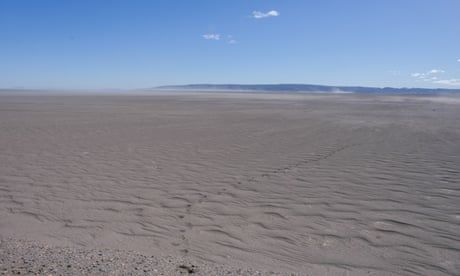
Drought and mismanagement have turned Lake Colhué Huapí into a virtual dustbowl. Now the race is on to save its sister lake from the same fate
From the top of a hill, Yeni Szlapelis, 46, looks out over the arid plateaus of south-central Argentina at the sources of her greatest worries. To the east, dust clouds emerge from the remains of a dry lake the size of New York City: the Colhué Huapí. To the west, Lake Musters, an essential source of water for the region shimmers under the scorching sun.
Szlapelis, an agronomist who grew up in the area, often visits this spot on her trail runs and follows the receding shores of the two lakes. As a researcher at the National Institute of Agricultural Technology (INTA), she knows the region’s valleys and farmland well, having worked there for 20 years. Her verdict is clear: if nothing is done to improve water management, the disappearance of both lakes will be irreversible.
Continue reading...